The impact of EdTech on workforce quality cannot be ignored. As an organization, you may want to consider incorporating educational technology (EdTech) into your training programs to improve their value in upskilling your employees. EdTech has been rapidly growing in popularity in recent years, and for good reason. By leveraging technology, companies can offer more engaging and effective training experiences for their employees, leading to better retention of information and improved job performance.
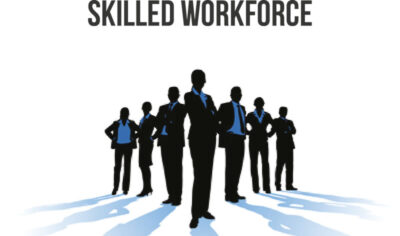
The biggest impact of EdTech on workforce quality is its ability to personalize learning experiences. With the help of artificial intelligence and machine learning algorithms, EdTech platforms can analyze each employee’s learning style and adapt the training content accordingly. This ensures that employees are receiving the information in a way that is most effective for them, leading to better retention and application of the material.
Additionally, EdTech can help companies stay up-to-date with the latest industry trends and best practices. As new technologies and techniques emerge, EdTech platforms can quickly update their training content to reflect these changes. This ensures that employees are always equipped with the most relevant and up-to-date knowledge and skills.
Related Posts:
- The Growing EdTech Market Creates Hyper-Competitiveness in Hiring
- Ed-tech is contributing to job creation
Milestones in EdTech
Over the years, there have been several milestones in EdTech that have shaped the way we learn. One of the earliest milestones was the invention of the printing press in the 15th century, which made it possible to produce books in large quantities. This made education more accessible to the masses, as books became more affordable and widely available.
The next milestone was the introduction of the blackboard in the 19th century, which revolutionized the way teachers could present information to their students. With the blackboard, teachers could write and draw diagrams to explain complex concepts, making it easier for students to understand.
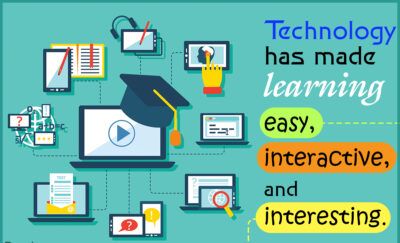
In the 20th century, the introduction of audio and video technology further transformed education. With the advent of radio, television, and later, the internet, it became possible to deliver education to students in remote locations. This made education more accessible to people who previously had limited access to it.
Today, we are seeing a new wave of EdTech that is transforming the way we learn once again. With the use of virtual reality, augmented reality, and artificial intelligence, education is becoming more immersive, interactive, and personalized than ever before.
1. Impact of EdTech on Skill Enhancement
With the advent of EdTech, the workforce is experiencing a significant transformation, leading to the development of new skill sets. EdTech has played a crucial role in enhancing skills and knowledge, leading to better job prospects and career growth. In this section, we will discuss the key ways in which EdTech is contributing to skill enhancement.
Upskilling and Reskilling
The impact of EdTech on workforce quality is seen in how it has made upskilling and reskilling accessible and affordable, enabling individuals to learn new skills or upgrade their existing skills without leaving their jobs. Online courses, webinars, and virtual classrooms provide learners with the flexibility to learn at their own pace and convenience.
This has led to a significant increase in the number of individuals opting for upskilling and reskilling courses to enhance their employability. The ultimate result is hypercompetitiveness in hiring talent and the associated high workforce quality.
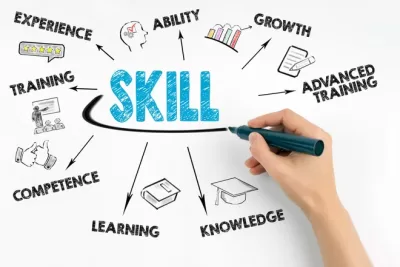
Continuous Learning Culture
The impact of EdTech on workforce quality also stems from the development of a continuous learning culture in the workforce. With the help of online learning platforms, learners can access a wide range of courses and resources to keep themselves updated with the latest industry trends and technologies. This has led to a shift from traditional learning methods to a more dynamic and continuous learning approach.
2. Impact of EdTech on Learning Modalities
As technology continues to advance, so do the ways in which people learn. The significant impact of EdTech on workforce quality is anchored on the introduction of new learning modalities that promote a more efficient and effective learning experience.
Blended Learning Models
Blended learning models combine traditional classroom instruction with online learning. This approach allows learners to take advantage of the benefits of both in-person and online learning. With blended learning, learners can work at their own pace, access course materials online, and receive personalized feedback from their instructors.
Blended learning models have been shown to improve learner engagement and retention rates. By incorporating technology into the learning process, learners can access a variety of multimedia resources, such as videos, interactive simulations, and online quizzes. This approach promotes active and interactive learning and helps learners to better understand complex concepts.
Self-paced Learning
Self-paced learning is another learning modality that shows the impact of EdTech on workforce quality. With self-paced learning, learners can take control of their own learning experience by setting their own pace and accessing course materials at any time. This approach is particularly beneficial for learners who have busy schedules or who prefer to learn independently, which perfectly describes employed people.

Self-paced learning also allows learners to focus on the areas where they need the most help. With online resources such as video tutorials and interactive simulations, learners can practice and reinforce their understanding of key concepts. This approach promotes a deeper understanding of the material and can lead to better learning outcomes.
Therefore, the impact of EdTech on workforce quality relates to its provision of new learning modalities that promote more efficient and effective training programs and learning experiences. Blended learning models and self-paced learning have both been shown to improve learner engagement and retention rates and promote a deeper understanding of complex concepts.
By incorporating technology into the learning process, learners in workforce training programs can take control of their own learning experience and greatly improve their skills.
3. Impact EdTech on Employee Engagement
EdTech has revolutionized the way employees learn and engage with their work. With the introduction of interactive learning and gamification, employee engagement has seen a significant boost.
Gamification
Gamification is the application of game elements in non-game contexts. It has been widely used in EdTech to enhance employee engagement by creating a fun and interactive learning experience. By incorporating game-like features such as points, badges, and leaderboards, employees are motivated to learn and improve their skills.
Gamification also provides instant feedback, which helps employees track their progress and identify areas for improvement. This feedback loop creates a sense of accomplishment, which encourages employees to continue learning and engaging with their work.
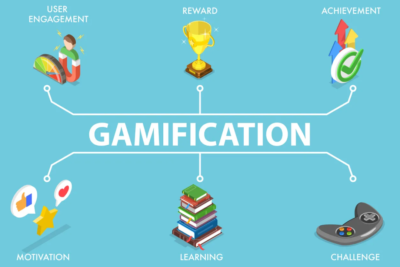
Interactive Learning
Interactive learning is another EdTech feature that has had a positive impact on employee engagement. It involves the use of multimedia tools such as videos, animations, and simulations to create an immersive learning experience.
Interactive learning promotes active participation, which enhances employee engagement. It also allows employees to learn at their own pace, which can be especially helpful for those who may struggle with traditional learning methods.
4. Impact of EdTech Assessment and Credentialing
Assessment and credentialing are crucial aspects of the education system. They enable learners to prove their knowledge and skills, which can help them gain employment or advance in their careers. The impact of EdTech on workforce quality is in how it has revolutionized assessment and credentialing by making them more accessible, reliable, and comprehensive.
Certifications and Badges
EdTech has enabled the creation of digital certifications and badges that can be earned through online courses, assessments, and other forms of learning. These credentials are becoming increasingly popular among employers as they provide evidence of a candidate’s skills and knowledge. Digital badges are also more versatile than traditional paper certificates as they can be easily shared on social media and other online platforms.
Certifications and badges can also be used to fill skills gaps in the workforce. For example, some companies use badges to train employees on new software or technologies. This approach can be more cost-effective than traditional training methods and can help employees gain new skills quickly.
Competency-Based Assessments
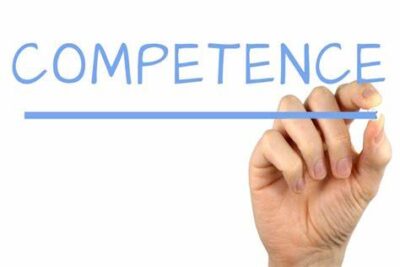
Competency-based assessments measure a learner’s ability to perform specific tasks or demonstrate specific skills. These assessments are often used in vocational training and can provide a more accurate measure of a learner’s abilities than traditional exams.
EdTech has enabled the creation of digital competency-based assessments that can be taken remotely. This approach is particularly useful for learners who are unable to attend in-person assessments due to geographic or other barriers. Digital assessments can also be more objective than traditional assessments as they are often graded by algorithms rather than human graders.
In other words, EdTech has had a significant impact on workforce quality through digitized assessment and credentialing in the workforce. Digital certifications and badges and competency-based assessments are just two examples of how technology is making these processes more accessible, reliable, and comprehensive. As the EdTech industry continues to grow, we can expect to see even more innovations in this area.
Challenges and Considerations
As with any new technology, there are challenges and considerations that come with their implementation. The impact of EdTech on workforce quality also has its share of challenges that make it difficult to fully capitalize on its benefits. In this section, we will discuss two major areas of concern: the digital divide and data privacy concerns.
Digital Divide
The digital divide refers to the gap between those who have access to technology and those who do not. This gap can be seen in terms of access to hardware and software, as well as access to reliable internet connections. While EdTech has the potential to improve workforce quality, it is important to ensure that all members of the workforce have access to the necessary technology and resources.
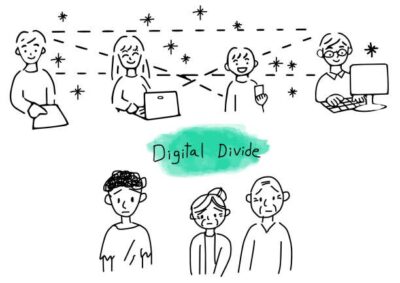
To address this issue, employers can provide training and resources to help bridge the gap. This can include providing access to hardware and software, as well as offering training and support for employees who may be less familiar with technology.
Data Privacy Concerns
As with any digital technology, data privacy is a major concern when it comes to EdTech. Employers and educators must ensure that they are collecting and handling data in a responsible and ethical manner. This includes obtaining consent from employees before collecting any personal data, as well as implementing robust security measures to protect that data.
To address this issue, employers can work with EdTech providers to ensure that their products and services are designed with privacy and security in mind. They can also provide training and resources to employees to help them understand their rights and responsibilities when it comes to data privacy.
Future Trends in EdTech
Artificial Intelligence
Artificial Intelligence (AI) is a rapidly growing technology that has the potential to revolutionize the way we learn and work. In the field of education, AI can be used to personalize learning experiences, provide instant feedback, and identify areas where students need improvement. In the workplace, AI can be used to automate repetitive tasks, analyze data, and provide insights that can help improve productivity and efficiency.
One of the most exciting applications of AI in education is the use of chatbots. These intelligent assistants can provide employees with instant answers to their questions, help them with their assignments, and even offer personalized study plans during training programs. In the workplace, chatbots can help employees find information quickly, automate routine tasks, and provide support for complex tasks.
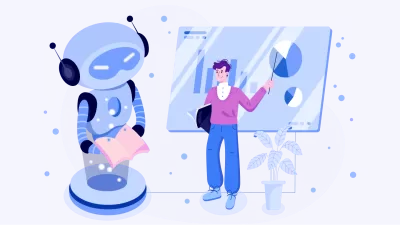
Augmented Reality and VR
Another exciting trend in EdTech is the use of Augmented Reality (AR) and Virtual Reality (VR) technologies. These immersive technologies can provide employees with engaging and interactive learning experiences that can help them better understand complex concepts. In the workplace, AR and VR can be used to provide employees with realistic simulations of real-world scenarios, allowing them to practice their skills in a safe and controlled environment.
AR and VR can also be used to create virtual classrooms and training programs, allowing students and employees to learn from anywhere in the world. This can be especially useful for remote workers or students who may not have access to traditional classroom settings.
Overall, EdTech is revolutionizing every learning space, from K-12 levels to training programs in workplaces. The impact of EdTech on workforce quality is evident from this article’s analysis of all the factors involved. Employers can take advantage of these dynamics to improve the skills of their employees and boost the return on investment of their human capital.
